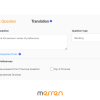Are you tired of manually administering surveys and sifting through mountains of data? Do you find it difficult to extract valuable insights from your survey responses? If so, you’re not alone. Many organizations struggle with the time-consuming and resource-intensive task of collecting and analyzing data. That’s where survey automation comes in. By automating the survey process, organizations can save time, reduce costs, and gain deeper , faster and more actionable insights into customer behavior and preferences.
In this blog, we’ll explore the world of survey automation, including what it is, how it works, and the benefits it offers. We’ll also discuss some best practices for designing and administering automated surveys, as well as some of the challenges that come with using this technology. So, let’s dive in and see how survey automation can help your organization unlock valuable insights and stay ahead of the competition.
What is Survey Automation?
If you’ve ever had to conduct a survey, you know it can be a time-consuming and labor-intensive process. From designing the questions to collecting and analyzing responses, it can take a lot of effort to get the insights you need. That’s where survey automation comes in.
Survey automation is the use of technology to streamline and simplify the feedback process. With automated surveys, many of the tasks involved in questionnaire creation and administration are handled by software, freeing up time and resources for other priorities. Automated surveys can be used for a variety of purposes, from market research to employee feedback, and can be administered in a variety of formats, including online, phone, messaging apps, emails, social media and more.
How does Survey Automation Work?
At its core, survey automation involves the use of software to automate various aspects of the feedback process. Depending on the tool you use, the specifics may vary, but generally, the process of survey automation involves several key steps:
1. Designing the questionnaire: The survey software that allows you to use a drag-and-drop interface to create survey questions, select response types, and customize the survey have now existed for more than two decades. Recent advancement in generative AI has made this even simpler by using natural language to create an optimized questionnaire in a few clicks.
2. Distributing the survey: Once your survey is designed, you can distribute it to your target audience via email, social media, messaging apps, chatbots, or other channels. Using CRM to trigger the survey can automate the process of when and how to distribute the them
3. Collecting responses: As respondents complete the survey, their answers are automatically recorded and compiled into a database. Platforms like Merren allow real-time data analytics as the responses are collected
4. Analyzing survey results: With automated survey tools, you can quickly and easily analyze survey responses to identify trends and insights. Survey platforms today have the power to automatically chart the structured data and do text analytics on the unstructured data. Again with AI, the ability to do analytics on the unstructured data has exploded
Overall, survey automation allows you to simplify the survey process and gain insights more efficiently.

What Are the Benefits of Using Automated Surveys Over Traditional Surveys?
When it comes to gathering feedback and insights from your target audience, traditional surveys have long been the go-to method. However, as technology has advanced, so too has the ability to automate the survey process. Here are some of the benefits of using automated surveys over traditional surveys:
Better consistency, less human errors
With automated surveys, you can ensure the feedback collection happens in an ongoing manner instead of adhoc . This means that you can collect data more consistently and accurately, without the risk of human error. Additionally, survey automation allows for standardized questions and response options, ensuring consistent data collection across all respondents.
Timely deployment
Automated surveys allow for timely deployment with the ability to schedule and send surveys at specific times, ensuring that your target audience is receiving the survey at the most optimal time. This increases the likelihood of higher response rates and more reliable data.
Faster results, quicker insights
Automated surveys can be distributed quickly and easily to a large audience, resulting in faster response times and quicker insights. With real-time data analytics, you can view and analyze survey responses as they come in, allowing you to make decisions and take actions faster.
Increased efficiency
With automated surveys, many of the tasks involved in survey creation and administration are handled by software, freeing up time and resources for other priorities. This means that you can gather feedback and insights more quickly and efficiently, and with less effort. Automated feedback collection systems are devoid of human intervention, reducing the costs and making it economically feasible.
Greater scalability
Automated surveys can be administered to large groups of people, without the need for additional staff or resources. This makes it easier to gather feedback from a large and diverse audience, without worrying about the logistics of survey administration.
Improved accuracy
With automated surveys, the risk of human error is greatly reduced. Customer responses are recorded and compiled automatically, and there is less risk of errors in data entry or analysis.
Better targeting
Automated surveys allow for more precise targeting of your audience, whether by demographic or interest. This means that you can gather insights that are more relevant and useful to your organization.
What Kinds of Surveys are Best Suited for Automation?
While survey automation can be used for a wide range of use cases, there are certain types of surveys that are particularly well-suited to automation. Here are some examples:
Customer experience
Automated surveys are ideal for gathering feedback on customer experiences, as they can be sent out immediately after an interaction and responses can be collected in real-time. This allows organizations to quickly identify areas for improvement and make necessary changes to improve the overall customer experience.
Customer satisfaction and NPS
Automated surveys can be a great way to gather feedback on customer satisfaction using metrics like CSAT, NPS and CES. By automating the survey process, you can quickly and easily gather feedback from a large number of customers, and identify areas for improvement in your products or services.
Employee feedback
Automated surveys can also be used to gather feedback from employees, whether on their job satisfaction, their opinions on company policies, or their experiences with the organization. Automated employee feedback surveys can be administered on a regular basis, allowing you to track changes in employee sentiment over time.
Market research
Automated surveys can be a valuable tool for implementing the market research process, whether to gauge interest in a new product or to understand consumer behavior. By automating the survey process, you can gather customer insights based on a large and diverse audience, without the need for expensive focus groups or other research methods.
Event feedback
Automated surveys can also be used to gather feedback from attendees at events or conferences. By automating the survey process, you can quickly and easily gather feedback on the event, identify areas for improvement, and track changes in attendee sentiment over time.
Course evaluations
Automated surveys can be used in educational settings to gather feedback on courses or programs. By automating the survey process, you can quickly and easily gather feedback from students, identify areas for improvement, and track changes in student sentiment over time.

What Types of Questions Can be Included in an Automated Survey?
One of the benefits of using automated surveys is the ability to include a wide range of question types, allowing for greater flexibility and customization. Here are some of the most common types of questions that can be included in an automated survey:
Multiple choice questions
Multiple choice questions are a popular question type for automated surveys, as they are easy to answer and simple to analyze. With automated surveys, you can include a large number of multiple choice options, making it easy to gather insights on a wide range of topics.
Rating scale questions
Rating scale questions are another common question type for automated surveys. With rating scale questions, survey respondents are asked to rate a particular aspect of a product, service, or experience on a scale of 1 to 10, or similar. This type of question allows for quick and easy feedback, and is particularly useful for gathering feedback on customer satisfaction.
Open-ended questions
While open-ended questions can be more difficult to analyze, they can also provide valuable insights into the thoughts and feelings of respondents. With automated surveys, you can include open-ended questions that allow respondents to provide more detailed feedback and explain their answers in their own words.
Likert scale questions
Likert scale questions are a popular question type for surveys, particularly those related to opinions or attitudes. With Likert scale questions, respondents are asked to rate their level of agreement or disagreement with a particular statement, using a scale of strongly agree to strongly disagree.
Demographic questions
Automated surveys can also include demographic questions, such as age, gender, income level, or location. This type of question allows you to gather insights on the characteristics of your audience, and can help you tailor your products or services to better meet their needs.
How Can Automated Surveys be Customized to Fit a Particular Audience or Purpose?
One of the key benefits of using automated surveys is the ability to customize them to fit the needs of a particular audience or purpose. Here are some ways you can customize your automated survey:
Timing
Automated surveys can be triggered at a pre-determined time- be it time of day when your customers are most likely to reply or when your customer has just completed a transaction. This helps you maximize the quality and quantity of responses.
Personalization
Personalization is another way to customize automated surveys. By using a respondent’s name, for example, you can create a more engaging and personalized experience. You can also use data you’ve collected about the respondent, such as their location or past purchases, to tailor the questionnaire to their interests and needs.

Language
Automated surveys can be customized to be delivered in a variety of languages. This is particularly useful for companies that operate in multiple countries or regions, or for surveys that target specific language-speaking populations.
Frequency
Finally, you can customize the frequency of your automated surveys. Depending on your needs, you may choose to send out surveys daily, weekly, monthly, or on an as-needed basis. By customizing the frequency of your surveys, you can gather the insights you need without overwhelming your audience.
The ability to customize automated surveys makes them a powerful tool for gathering insights and making informed decisions. By taking advantage of the customization options available, you can create a survey experience that is engaging, personalized, and relevant to your audience.
What are some of the challenges associated with using Automated Surveys, and how can they be addressed?
While there are many benefits to using automated surveys, there are also some challenges to be aware of. Here are some of the most common challenges, along with strategies for addressing them:
Response rates
One challenge with automated surveys is getting people to respond. Because automated surveys can be sent out in large quantities, respondents may feel less obligated to complete them, or may even ignore them altogether. To address this, consider reducing the frequency at which the surveys are deployed to an individual, keeping the surveys short, communicating the value of the feedback, offering incentives for completing the survey, such as a discount code or the chance to win a prize. You can also make the survey more engaging by including interactive elements, such as images or videos.
Technical issues
Automated surveys can also be subject to technical issues, such as slow load times or broken links. To address this, make sure that your survey is optimized for mobile devices and that all links are working properly. You may also want to consider using a third-party survey platform, such as Merren, which can help to ensure that your survey runs smoothly.
Survey fatigue
Finally, survey fatigue is a common challenge associated with automated surveys. If you send out too many surveys, or if the surveys are too long or repetitive, respondents may become fatigued and stop responding. To address this, be strategic about when and how often you send out surveys, and keep them short and focused. You can also use skip logic to tailor the survey to each respondent, which can help to keep them engaged and interested.
By being aware of these challenges and taking steps to address them, you can ensure that your automated surveys are effective and reliable sources of insights.
What are Some Best Practices for Designing and Administering Automated Surveys?
To get the most out of your automated surveys, it’s important to follow some best practices for designing and administering them. Here are some tips to help you create effective surveys:
Define your objectives
Before you begin designing your survey, it’s important to define your objectives. What insights do you hope to gain from the survey? What specific questions do you need to ask to achieve those objectives? By defining your objectives upfront, you can ensure that your survey is focused and targeted.
Keep it short and focused
One of the biggest advantages of automated surveys is that they can be completed quickly and easily. To take advantage of this, keep your survey short and focused. Only ask the questions that are necessary to achieve your objectives, and avoid including unnecessary or redundant questions.
Use skip logic
Skip logic is a powerful tool that allows you to tailor the survey to each respondent. By asking different questions based on the respondent’s previous answers, you can create a more personalized and engaging experience. This can also help to keep respondents interested and prevent survey fatigue.
Test your survey
Before you send out your survey, it’s important to test it thoroughly. Make sure that all of the questions are clear and easy to understand, and that there are no technical issues or broken links. You may also want to conduct a pilot test with a small group of respondents to ensure that the survey is working as intended.
Analyze your results
Once you have collected your survey responses, it’s important to analyze the results to gain insights. Look for patterns and trends in the data, and compare the responses of different groups to identify any significant differences. You can also use data visualization tools, such as charts and graphs, to help you better understand the data.
By following these best practices, you can create effective automated surveys that provide valuable insights for your organization.

What is the Future of Survey Automation in the Age of AI, and How Might it Continue to Evolve in the Coming Years?
As technology continues to evolve, it’s likely that survey automation will become even more sophisticated and powerful. Here are some ways that survey automation might continue to evolve in the coming years:
Improved AI algorithms
One of the biggest advantages of survey automation is the ability to use artificial intelligence (AI) to analyze survey responses. In the coming years, we can expect to see AI algorithms become even more powerful and sophisticated, allowing organizations to gain even deeper insights from their survey data.
Greater customization
As survey automation tools become more advanced, we can expect to see greater customization options. This could include the ability to create surveys that are tailored to specific industries or niches, or the ability to customize the look and feel of the survey to match a company’s branding.
More sophisticated question types
As AI algorithms become more advanced, we can also expect to see more sophisticated question types. For example, natural language processing (NLP) could be used to understand the meaning behind open-ended responses, allowing for more nuanced analysis of qualitative data.
Greater integration with other systems
As organizations continue to use more digital tools and platforms, we can expect to see survey automation tools become more integrated with other systems. This could include integration with customer relationship management (CRM) software, email marketing platforms, and other tools that organizations use to gather customer data.
Improved respondent experience
Finally, we can expect to see survey automation tools become even more focused on providing a positive respondent experience. This could include more personalized surveys, more engaging question types, and more mobile-friendly designs.
In conclusion, survey automation is an exciting field that is likely to continue to evolve and improve in the coming years. By staying up to date with the latest developments in survey
automation technology, organizations can gain valuable insights that help them make informed business decisions.
Here is how Merren’s feedback automation platform will help
Merren is the modern survey and CX platform that helps companies collect feedback from the customers wherever they are, instantaneously. Merren incorporates automation at multiple levels:
AI powered Survey Builder
Merren’s AI-powered Survey Builder allows companies to create sophisticated questionnaires that are ready to be deployed in a few clicks. No need to create one from scratch or force-fitting a template. AI builder creates a customized survey based on on your brand and category
CRM integration to automatically trigger surveys
Merren’s CRM integration allows for automation of the survey process by automatically triggering surveys based on customer’s interaction with the company. This means that surveys can be sent out at the perfect time, without any manual effort from your team.
Automatic multi-language translations
Merren’s platform also offers automatic multi-language translations, ensuring that language barriers do not prevent companies from gaining valuable customer insights. This feature saves time and effort by eliminating the need for manual translation efforts.
Multichannel deployment
Merren uses multiple channels for deploying surveys such as WhatsApp and Facebook messenger, HTML and AMP emails, chatbots etc to collect in-moment and in-context feedback from. This allows the user to collect customer feedback from wherever the customers are.
Automatic, real-time data analytics
Merren’s survey automation platform provides automatic, real-time data analytics that allow companies to gain valuable insights from the feedback collected. With Merren, companies can track both quantitative and qualitative data in real-time, helping them to make informed business decisions faster than ever before.
KPI and customer journey based dashboarding
Merren’s dashboarding feature allows companies to track their KPIs and customer journey, providing a holistic view of their customers’ experience. This feature enables easy identification of trends and areas that need improvement across customer touchpoint, helping companies to address issues before they become critical. The automated dashboarding provides actionable insights to ensure that businesses can make data-driven decisions quickly and efficiently.
Overall, Merren’s survey automation platform is a game-changer for businesses who want to gain a competitive edge in today’s market. By automating the survey process with AI-powered technology, CRM integration, multi-language translations, and real-time analytics
Curious about how automation can fast track your feedback collection process? Check out our 14 day free trial here. If you are hesitating to take the leap, you can opt for a free consultation call here. Let us have a chat!





